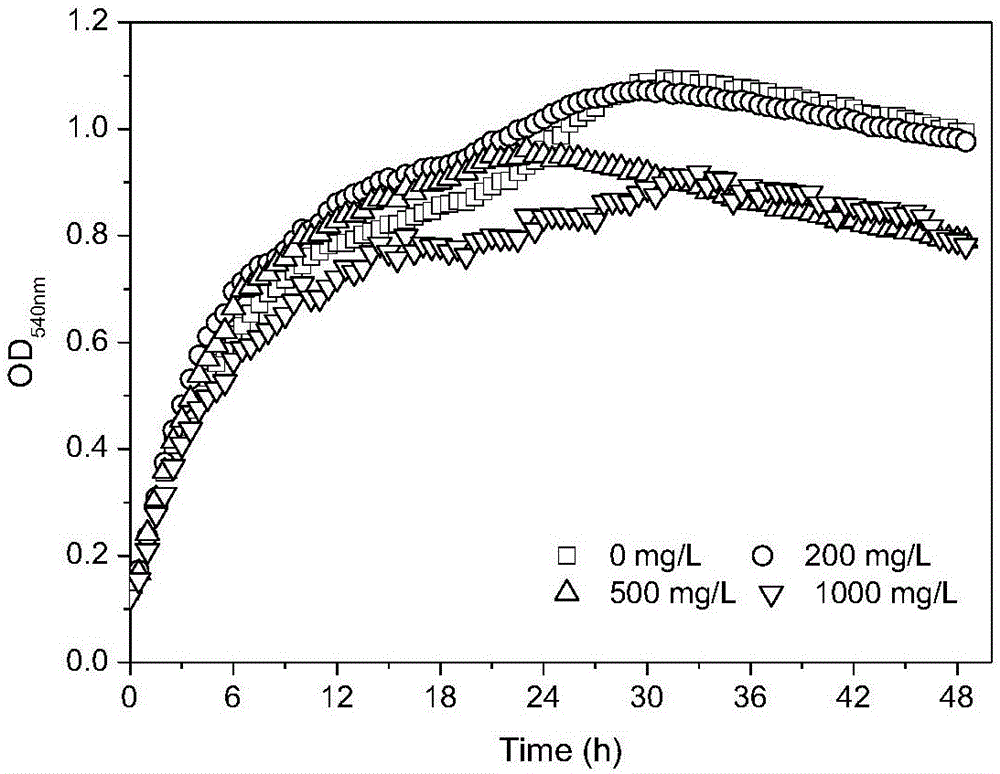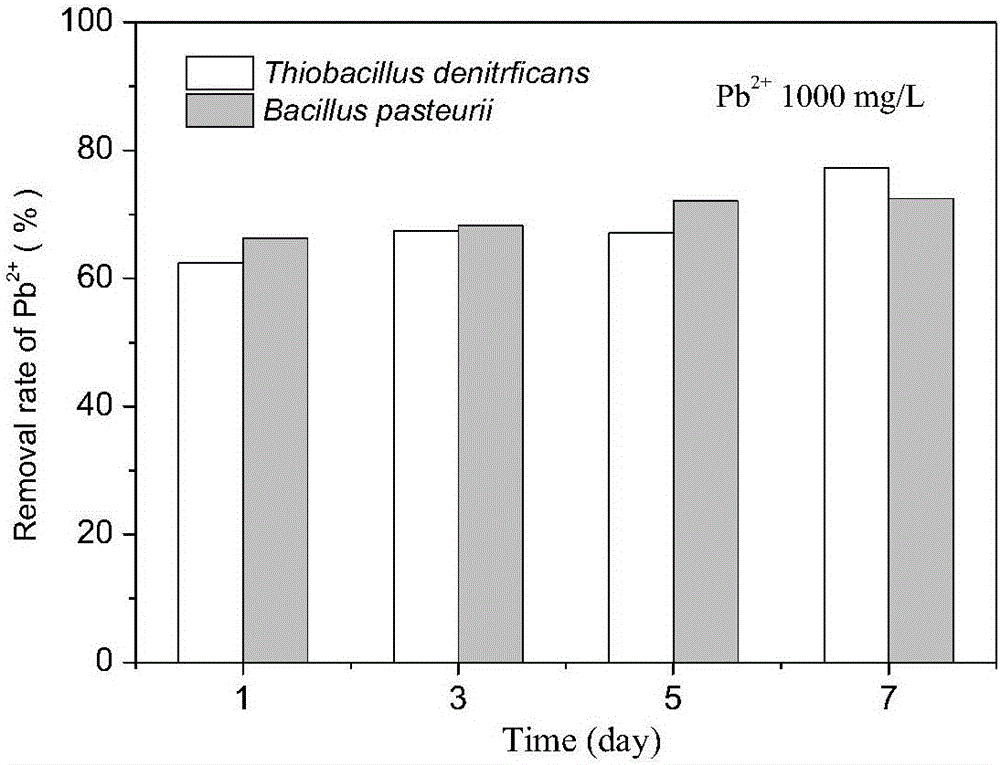Method for joint treatment of lead ion pollution by using carbonate-mineralization microbe-thiobacillus denitrificans
A technology of Thiobacillus denitrification and combined treatment is applied in the fields of resources and environment to achieve the effects of outstanding environmental friendliness, reduced treatment costs, and improved removal efficiency
- Summary
- Abstract
- Description
- Claims
- Application Information
AI Technical Summary
Problems solved by technology
Method used
Image
Examples
Embodiment 1
[0016] Example 1 A method of utilizing carbonate mineralizing bacteria-Thiobacillus denitrificans to jointly treat lead ion pollution, applying compound fertilizers containing urea and ammonium thiosulfate to a lead concentration of 50 mg / kg of soil, after 1 day, the concentration of the prepared bacteria was 0.5×10 8 ~5.0×10 8 cfu / mL of carbonate mineralizing bacteria solution according to 0.5L / m 2 The proportion of the above soil was added to keep the temperature range between 20°C and 30°C. After 1d, press 1.0L / m 2 The ratio of adding the prepared strain concentration is 0.5×10 8 ~5.0×10 8 cfu / mL of Thiobacillus denitrificans, use the system of carbonate mineralizing bacteria-Thiobacillus denitrificans to interact with lead ions for 7 days, sample 10mL and centrifuge at 4000r / min for 10min, take 1.0mL of supernatant, and dilute it for testing The residual lead ion concentration in the soil, the final removal rate of lead ion is 90%.
Embodiment 2
[0017]Example 2 A method of utilizing carbonate mineralizing bacteria-Thiobacillus denitrification to jointly treat lead ion pollution, applying compound fertilizers containing urea and ammonium thiosulfate to a lead concentration of 100 mg / kg of soil, after 2 days, the concentration of the prepared strains will be 0.5×10 8 ~5.0×10 8 cfu / mL of carbonate mineralizing bacteria solution according to 1.0L / m 2 The proportion of the above soil was added to keep the temperature range between 20°C and 30°C. After 2d, press 1.0L / m 2 The ratio of adding the prepared strain concentration is 0.5×10 8 ~5.0×10 8 cfu / mL of Thiobacillus denitrificans, use the system of carbonate mineralizing bacteria-Thiobacillus denitrificans to react with lead ions for 8 days, sample 10mL and centrifuge at 4000r / min for 10min, take 1.0mL of supernatant, and dilute it for testing The residual lead ion concentration in the soil, the final removal rate of lead ion is 94%.
Embodiment 3
[0018] Embodiment 3 A kind of method that utilizes carbonate mineralization bacterium-thiobacillus denitrification to jointly process lead ion pollution, apply the compound fertilizer containing urea and ammonium thiosulfate to lead concentration to be 200mg / kg of soil, after 2 days, the concentration of the prepared strains will be 0.5×10 8 ~5.0×10 8 cfu / mL of carbonate mineralizing bacteria solution according to 2.0L / m 2 The proportion of the above soil was added to keep the temperature range between 20°C and 30°C. After 2d, press 2.0L / m 2 The ratio of adding the prepared strain concentration is 0.5×10 8 ~5.0×10 8 cfu / mL of Thiobacillus denitrificans, use the system of carbonate mineralizing bacteria-Thiobacillus denitrificans to interact with lead ions for 10 days, sample 10mL and centrifuge at 4000r / min for 10min, take 1.0mL of supernatant, and dilute it for testing The residual lead ion concentration in the soil, the final removal rate of lead ion is 95.9%.
PUM
| Property | Measurement | Unit |
|---|---|---|
| tolerance concentration | aaaaa | aaaaa |
| tolerance concentration | aaaaa | aaaaa |
Abstract
Description
Claims
Application Information
 Login to View More
Login to View More - R&D
- Intellectual Property
- Life Sciences
- Materials
- Tech Scout
- Unparalleled Data Quality
- Higher Quality Content
- 60% Fewer Hallucinations
Browse by: Latest US Patents, China's latest patents, Technical Efficacy Thesaurus, Application Domain, Technology Topic, Popular Technical Reports.
© 2025 PatSnap. All rights reserved.Legal|Privacy policy|Modern Slavery Act Transparency Statement|Sitemap|About US| Contact US: help@patsnap.com


